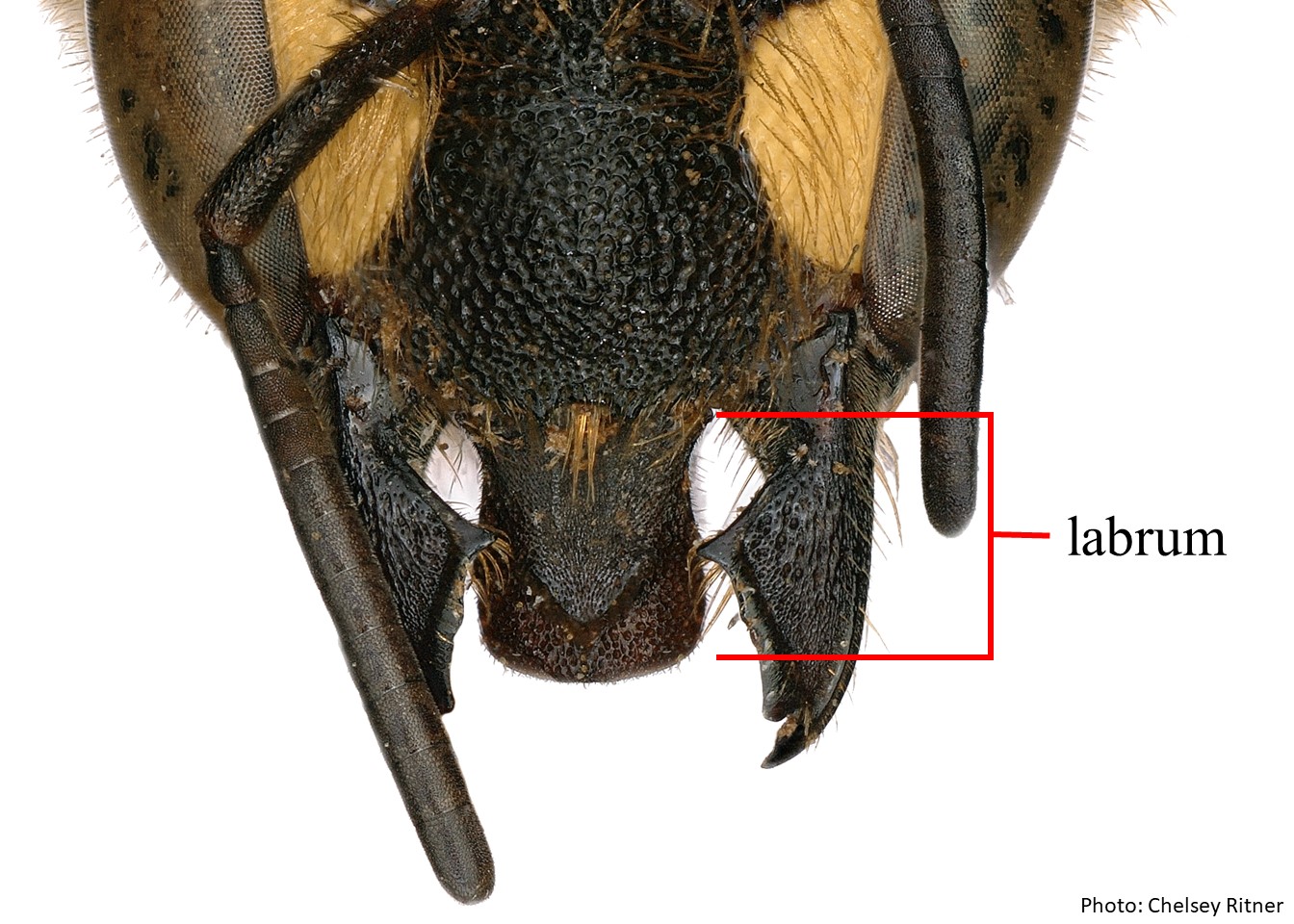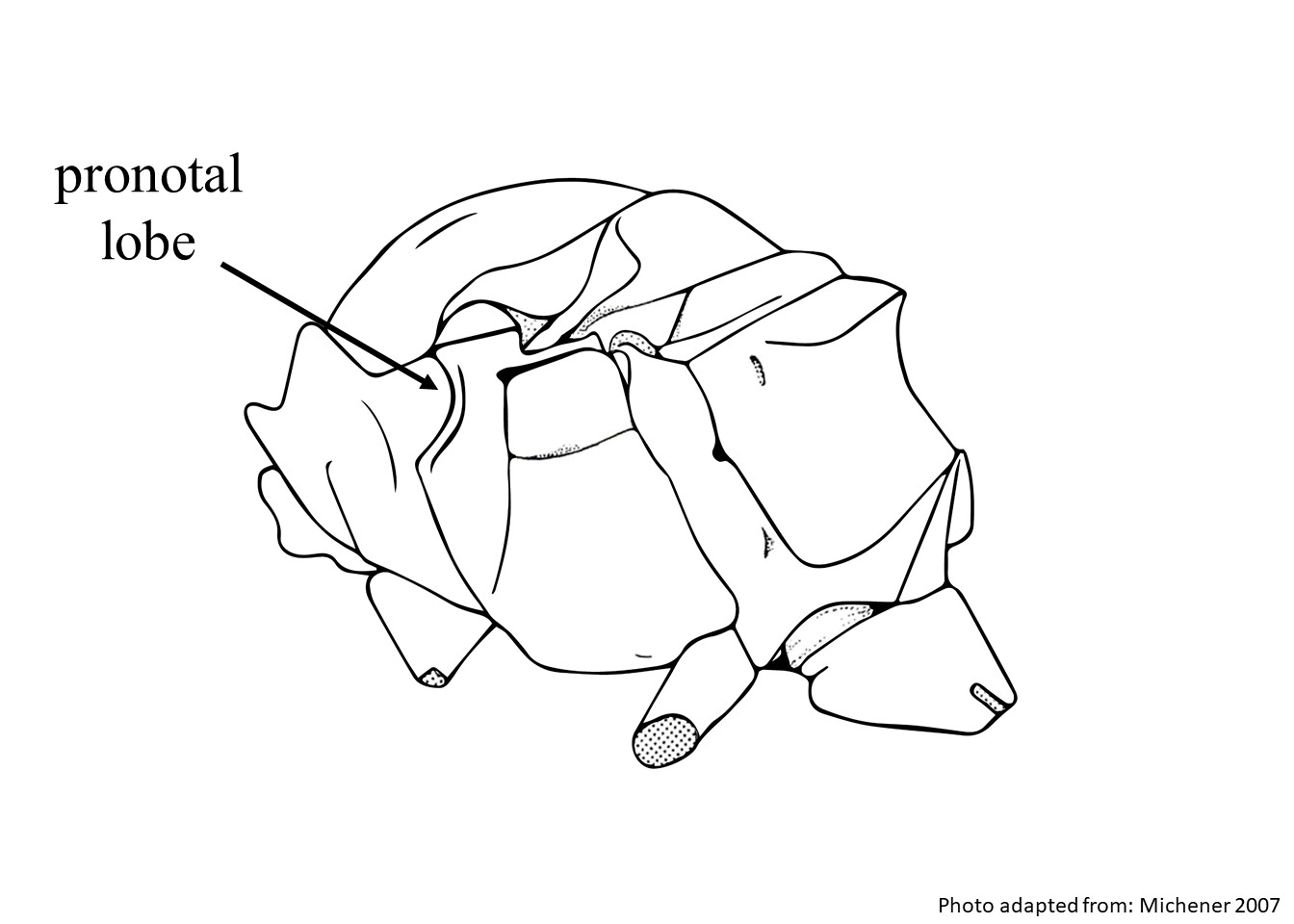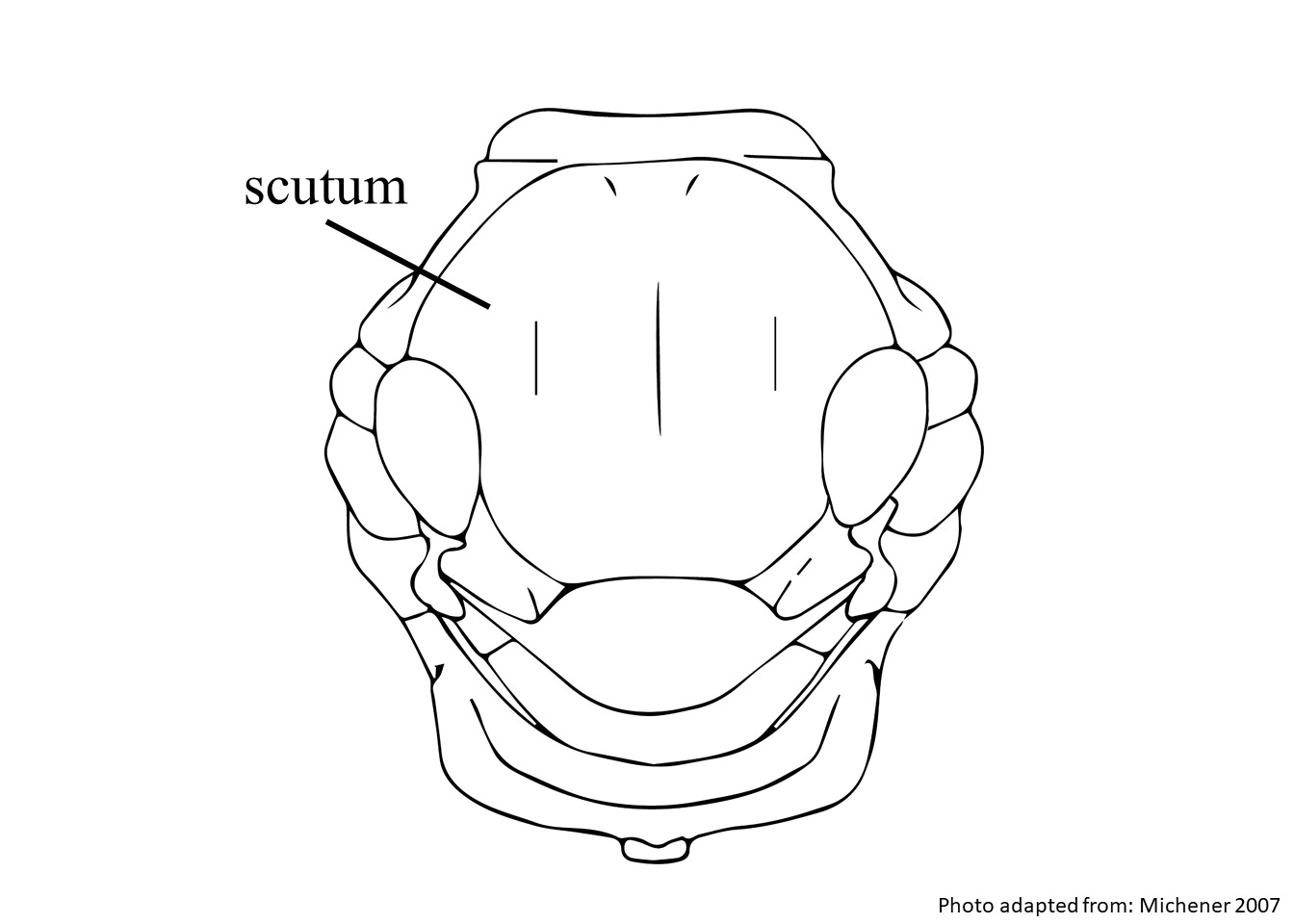Taxonomy
Family: Megachilidae
Subfamily: Megachilinae
Tribe: Osmiini
Genus: Hofferia Tkalců, 1984
Subgenera: none
Common name: none
Overview
Hofferia are black to reddish-black, slender, and elongate bees with apicalapical:
near or at the apex or end of any structure
bands of hair on their tergaterga:
the segments on the top side of the abdomen, often abbreviated when referring to a specific segment to T1, T2, T3, T4, T5, T6, or T7
 . They range in body length from 8.5–15 mm (Michener 2007Michener 2007:
. They range in body length from 8.5–15 mm (Michener 2007Michener 2007:
Michener, C.D. 2007. The Bees of the World (2nd ed.). Johns Hopkins University Press, Baltimore and London, 953 pp.).
Diversity
Hofferia contains 2 species worldwide (Michener 2007Michener 2007:
Michener, C.D. 2007. The Bees of the World (2nd ed.). Johns Hopkins University Press, Baltimore and London, 953 pp.); none are known to occur in the U.S. or Canada.
Diagnostic characteristics
(modified from Michener 2007Michener 2007:
Michener, C.D. 2007. The Bees of the World (2nd ed.). Johns Hopkins University Press, Baltimore and London, 953 pp.)
- Arolia present.
- Labrum labrum:
part of the head abutting the clypeus, folds down in front of the mouthparts
 longer than clypeusclypeus:
longer than clypeusclypeus:
a section of the face below the antennae, demarcated by the epistomal sutures
 .
.
- Middle tibiatibia:
the segment of the leg, between the femur and the tarsus
 with one apicalapical:
with one apicalapical:
near or at the apex or end of any structure
spine.
- Preoccipital carinacarina:
a clearly defined ridge or keel, not necessarily high or acute; usually appears on bees as simply a raised line
present .
- Pronotal lobe pronotal lobe:
a part of the pronotum located dorsally on the posterior margin of the pronotum and overlaps the anterior thoracic spiracle
 without carinacarina:
without carinacarina:
a clearly defined ridge or keel, not necessarily high or acute; usually appears on bees as simply a raised line
.
- Scutum scutum:
the large segment on top of the thorax located between the wings and behind the head
 with acute posterior laterallateral:
with acute posterior laterallateral:
relating, pertaining, or attached to the side
angle.
- Female labrumlabrum:
part of the head abutting the clypeus, folds down in front of the mouthparts
 without preapicalpreapical:
without preapicalpreapical:
referring to a section of a bee that is physically found just before the outermost (or apical) end of the section or segment
tuft or fringe of hairs.
- Female S6S6:
the plates on the underside of the abdomen, often abbreviated when referring to a specific segment to S1, S2, S3, S4, S5, S6, S7, or S8
 with median apicalapical:
with median apicalapical:
near or at the apex or end of any structure
spike.
- Female tarsal claw simple.
- Male S1S1:
the plates on the underside of the abdomen, often abbreviated when referring to a specific segment to S1, S2, S3, S4, S5, S6, S7, or S8
 produced and truncatetruncate:
produced and truncatetruncate:
ending abruptly, or squared off
.
- Male S1S1:
the plates on the underside of the abdomen, often abbreviated when referring to a specific segment to S1, S2, S3, S4, S5, S6, S7, or S8
 without brush of hair under the margin.
without brush of hair under the margin.
- Male T6T6:
the segments on the top side of the abdomen, often abbreviated when referring to a specific segment to T1, T2, T3, T4, T5, T6, or T7
 with irregular nodulose preapicalpreapical:
with irregular nodulose preapicalpreapical:
referring to a section of a bee that is physically found just before the outermost (or apical) end of the section or segment
carinacarina:
a clearly defined ridge or keel, not necessarily high or acute; usually appears on bees as simply a raised line
.
May be confused with
Hofferia may be confused with Chelostoma and Protosmia due to their similar elongate builds and external characteristics, but they can be distinguished by the combination of characters above (Michener 2007Michener 2007:
Michener, C.D. 2007. The Bees of the World (2nd ed.). Johns Hopkins University Press, Baltimore and London, 953 pp.).
Known invasives
There are no known invasives.
Host associations
Hofferia specializes on Carduoideae (Asteraceae) (Müller and Trunz 2014).
Nesting behavior
Hofferia are solitary nesting bees, but little is known about their nesting habits. Hofferia schmiedeknechti builds nests in wood-boring beetle excavations in dead wood (Müller and Trunz 2014). Thin-cell partitions are made from plant resin (Rozen and Praz 2016Rozen and Praz 2016:
Rozen, J.G. and C.J. Praz. 2016. Mature larvae and nesting biologies of bees currently assigned to the Osmiini (Apoidea: Megachilidae). American Museum Novitates 3864: 1ndash;46.). A nest plug is made from resin mixed with small pebbles (Müller and Trunz 2014; Rozen and Praz 2016Rozen and Praz 2016:
Rozen, J.G. and C.J. Praz. 2016. Mature larvae and nesting biologies of bees currently assigned to the Osmiini (Apoidea: Megachilidae). American Museum Novitates 3864: 1ndash;46.).
Distribution
Hofferia ranges throughout the Mediterranean from Morocco, Algeria, Turkey, Bulgaria, Romania, and Greece (Michener 2007Michener 2007:
Michener, C.D. 2007. The Bees of the World (2nd ed.). Johns Hopkins University Press, Baltimore and London, 953 pp.).

Distribution map generated by Discover Life -- click on map for details, credits, and terms of use.
References
Michener, C.D. 2007. The Bees of the World (2nd ed.). Johns Hopkins University Press, Baltimore and London, 953 pp.
Müller, A. and V. Trunz. 2014. Palaearctic Osmiine bees of the genera
Hofferia and
Stenoheriades (Megachilidae, Osmiini): biology, taxonomy and key to species. Zootaxa 3765:175-186.
Rozen, J.G. and C.J. Praz. 2016. Mature
larvaelarvae:
active immature form of an insect, especially one that differs greatly from the adult and forms the stage between egg and pupa
and nesting biologies of bees currently assigned to the Osmiini (Apoidea: Megachilidae). American Museum Novitates 3864:1-46.
 . They range in body length from 8.5–15 mm (Michener 2007Michener 2007:
. They range in body length from 8.5–15 mm (Michener 2007Michener 2007: longer than clypeusclypeus:
longer than clypeusclypeus: without preapicalpreapical:
without preapicalpreapical: with median apicalapical:
with median apicalapical: produced and truncatetruncate:
produced and truncatetruncate: without brush of hair under the margin.
without brush of hair under the margin. with irregular nodulose preapicalpreapical:
with irregular nodulose preapicalpreapical: